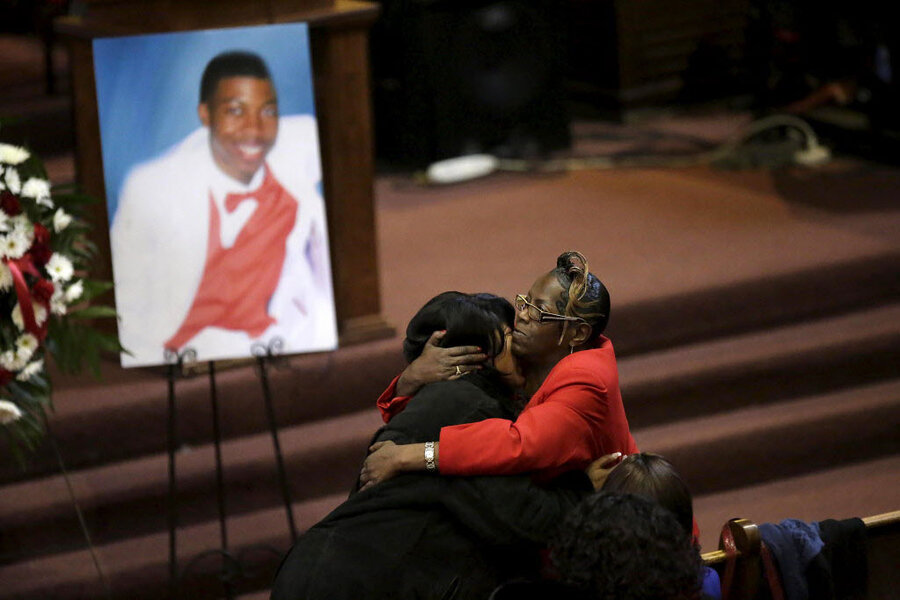Chicago cop's conflicted account of fatal shooting raises questions
Loading...
Two different pictures are emerging from the account of what happened when a Chicago police officer fatally shot a college student and his neighbor in the West Erie area of Chicago.
In his initial conversation with investigators, Officer Robert Rialmo said that Quintonio LeGrier, who is black, was holding a baseball bat over his head and refused to drop it before the officer fired. Two days later, Mr. Rialmo said that Mr. LeGrier tried to hit him with the bat twice.
Attorney Basileios Foutris, who represents LeGrier's father, told The Associated Press that Rialmo added details to his second account in order to justify using force. LeGrier was shot six times by the police on Dec. 26. He neighbor Bettie Jones, a grandmother of 10, was also killed in the shooting.
The account detailed in recorded calls to 911 is murky. LeGrier called the police three separate times asking for officer assistance, saying that his life was in danger, NBC Chicago reports. Each time, the dispatcher hung up on him when he refused to provide specific details of the emergency. Just one minute after the third call, LeGrier’s father called 911, saying that his son was threatening him.
In a statement, Chicago’s Office of Emergency Management and Communications said that "call takers are required to ask specific questions to determine the nature of the event, determine if such a request warrants and emergency response and dispatch proper resources. Call takers follow specific protocols and may only terminate a call as a last resort."
City leadership in Chicago is currently under scrutiny for how the Chicago police force has handled its interactions with the black community. In November and December of last year, the city was finally forced to release two separate videos that depicted white officers fatally shooting young black men.
Mayor Rahm Emanuel publicly apologized for how the city handled the release of the November video that showed Officer Jason Van Dyke fatally shooting teenager Laquan McDonald, and vowed "complete and total reform” of the Chicago Police Department, but his public apology was met with protests and calls for his resignation.
Part of the problem for creating greater accountability among police forces nationwide is the lack of concrete data on how many people are fatally shot by police. While body cameras and grand jury reforms can help, transparent statistics will go a long way toward lowering existing trends, law enforcement experts say. But because most data is self-reported, there are few easy ways to improve its accuracy.
In December, Emanuel responded to critic by creating a task force focused on reforms in Chicago’s Police Department. One of the task force’s first initiatives, in February, was to shorten the turnaround time on when videos and other evidence related to police-involved shootings would be released to the public. The wait time will now be as short as 60 days.
This report contains material from the Associated Press.






